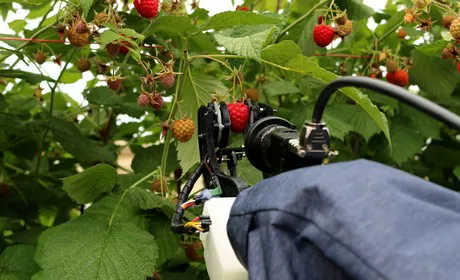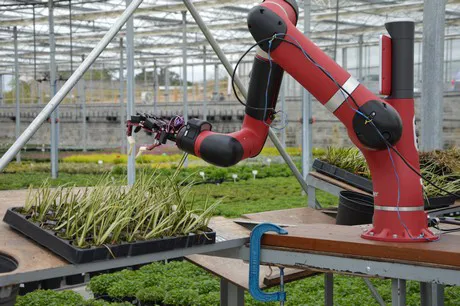Addressing AHDB’s SmartHort conference, NFU Sector Board Chair and apple producer, Ali Capper, made it clear that UK horticulture is not alone in its challenge to access labour.
“Just employ local people,” said Ali. “The amount of times that is said, but it fails to recognise that labour is not a UK-centric problem, it’s a global issue.“
“Germany is home to 81 million people and they have more than 1.2 million vacancies, the country’s federal labour office estimates that they’ll need 12 million new workers in the next 30 years, so for 2019 they have been able to access 60,000 seasonal workers to support demand.“

“Australia, New Zealand, South Korea all have seasonal worker schemes in place. Everyone else in the world is facing the same problems as we are – could robotics developed in AHDB’s Automation Challenge form part of the future solution.”
Labour has been reported to account for up to 70 per cent of variable production costs in some areas of UK horticulture now.
Reduced access to workforce could in turn see productivity levels fall at a time when consumer demand for plant based products is at its highest. Growers are actively seeking solutions.
One of the ways multimillion-pound British businesses like G’s are responding to the challenge is by investing in new technology.
Precision farming manager, Jacob Kirwan, said: “At G’s we consider how we can use technology to ensure our supply chain is robust. We want to make the supply chain agile, so it can react to challenges like Brexit and reduced access to labour, as well as reducing our environmental impact.“

“To address this challenge, since 2012 we’ve invested £8 million to automate harvest technology in lettuce crops which has increased productivity by 60 per cent and a celery auto-lifting harvester, increasing productivity by 50 per cent.“
G’s has also collaborated with the University of Cambridge to develop a prototype robotic lettuce harvester.
Jacob added: “By using technology to bag, label and transfer the product from the field, our reliance on labour is reduced. Access to manual labour is also decreasing, so with our latest technology, we have one skilled person guiding a camera to carry out a job, which would have previously been done by many more.“
“We expect the labour challenge will continue, with the Living Wage expected to increase by 15 per cent up to £9 per hour in 2020, alongside the retail price of products like iceberg lettuce halving from 2014 – 2018, there is retail price deflation.“
“Workers shouldn’t fear investment in technology because it will still create jobs, they will just be different kinds of jobs. Rather than less skilled repetitive roles, they’ll be semi-skilled and highly skilled jobs, where people with experience working in the field can apply and receive training to develop with the new technology.”
For more information on the recent SmartHort Conference visit: www.ahdb.org.uk/smarthort-conference-2019.
